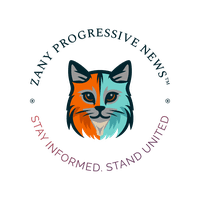
Recently updated on August 13th, 2024 at 10:23 pm
Q. My only experience with geography on the day-to-day is Google Maps, so what is geography as a field of study?
A. Geography is the study of the relationships between space and place and the people and things that inhabit these things. It sounds really broad on its own, but that’s kind of the beauty of geography. It is essentially how we understand the spaces and places around us that we call home, that we move through. How do we interpret their meaning, and how do we figure out the relationships between spaces, between places, and between people.
So geography can be maps, looking at spatial relationships. But it can also be something deeply personal, like how we interact with space.
When I get home after a long day and I see my wife and cat, I feel relaxed. That’s geography, because that’s a relationship with space that I have.
Q. What is Indigenous geography? What makes it different?
A. Dominant geography is that we are observing space in place, and doing it in a way that holds us separate. It’s top-down and analytical.
As an Ojibwe person, in our own creation story we have certain obligations to the environment and the spaces we move within. That’s Indigenous geography. This deep relationship with the land.
I’m not talking Disney, Pocahontas, talking to trees and racoons. But if something bad happens to the land, that is followed up by something bad happening to us as a people, because we are deeply dependent on the land in order to have our cultures and our way of life.
The beauty of Indigenous geography is that it drives home that deep interconnectedness. We are part of the environment, we are part of a space, and we are not separate from it, nor should we try to hold ourselves separate from it.
Q. How does climate change integrate into your research and point of view?
A. Climate change is something that can really disastrously affect the geographies around us. Here in British Columbia, towns like Lytton are literally burned off the face of the planet due to forest fires.
I think about wild rice, an important food to us, and it relies on a certain amount of water and oxygen and water temperature and lack of pollution. In Minnesota, we are starting to see all these things slip away.
Indigenous people are often at the center of these events, placed on marginal pieces of land, the most susceptible.
I kind of chuckle a little bit in a weird, ironic way, when people are like, “This is the end of the world.” Well, for Indigenous peoples, the world already ended multiple times, right? Settlers tried to eliminate us, tried to starve us out. Genocide beat our language and culture out of us. It’s just another end of the world, right?
It becomes interesting where Indigenous communities don’t really fall into the fatalism that you find in settler frameworks.
When I do work around cultural responses to climate change, I point to Indigenous nations. These are the people that you want to be looking at and talk to when it comes to how to survive these sorts of things. Because, for better or for worse, we Indigenous folks have become really damn good at surviving things that were meant to kill and eliminate us.
Q. You teach geography as a professor at the University of Victoria. How do you explain this to students, and how does it help fight climate change to engage with the world this way?
A. I tell my students it’s very accessible to think this way. Some students are like, “Oh, are we going to do ceremonies?” And I tell them no, we are just going to learn how Indigenous peoples view the world. Which is not super mystical, but it is very mundane, very everyday.
Q. What do you tell them to do?
A. Be present and have connections. Intentionally see where you are and move through your local space.
Q. Can you tell me more about that? How does that help with climate change issues?
A. When people view themselves as interconnected to the environment in various ways, they realize, “There’s a lot I can do to help create a better world.”
I want to be careful. There is a lot of individualization of climate change: “It’s up to you to make an impact,” right? And it’s a good way of obscuring the role of capitalism and corporations and extraction that has caused this.
But there are some things where there’s strength in numbers, and there’s a way that even one individual action can help inspire others. It leads to more wholesale, structural changes on a societal level.
— Taylar Dawn Stagner
A parting shot
Two hundred people gathered this summer to celebrate and name a white buffalo calf born in Yellowstone National Park, fulfilling an Indigenous prophecy — a blessing and a warning. Watch some clips from the celebration here.
Excerpts or more from this article, originally published on Grist , was republished here, with permission, under a Creative Commons License.








